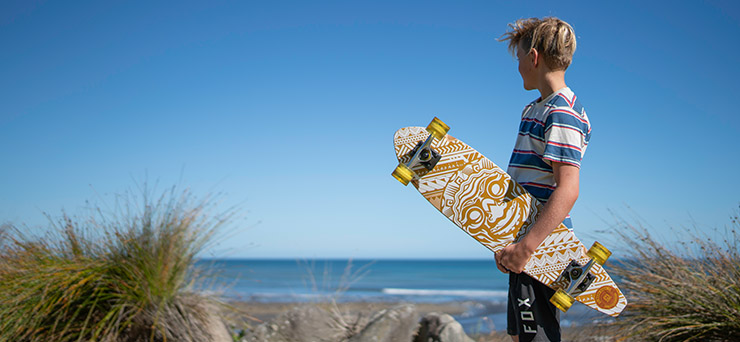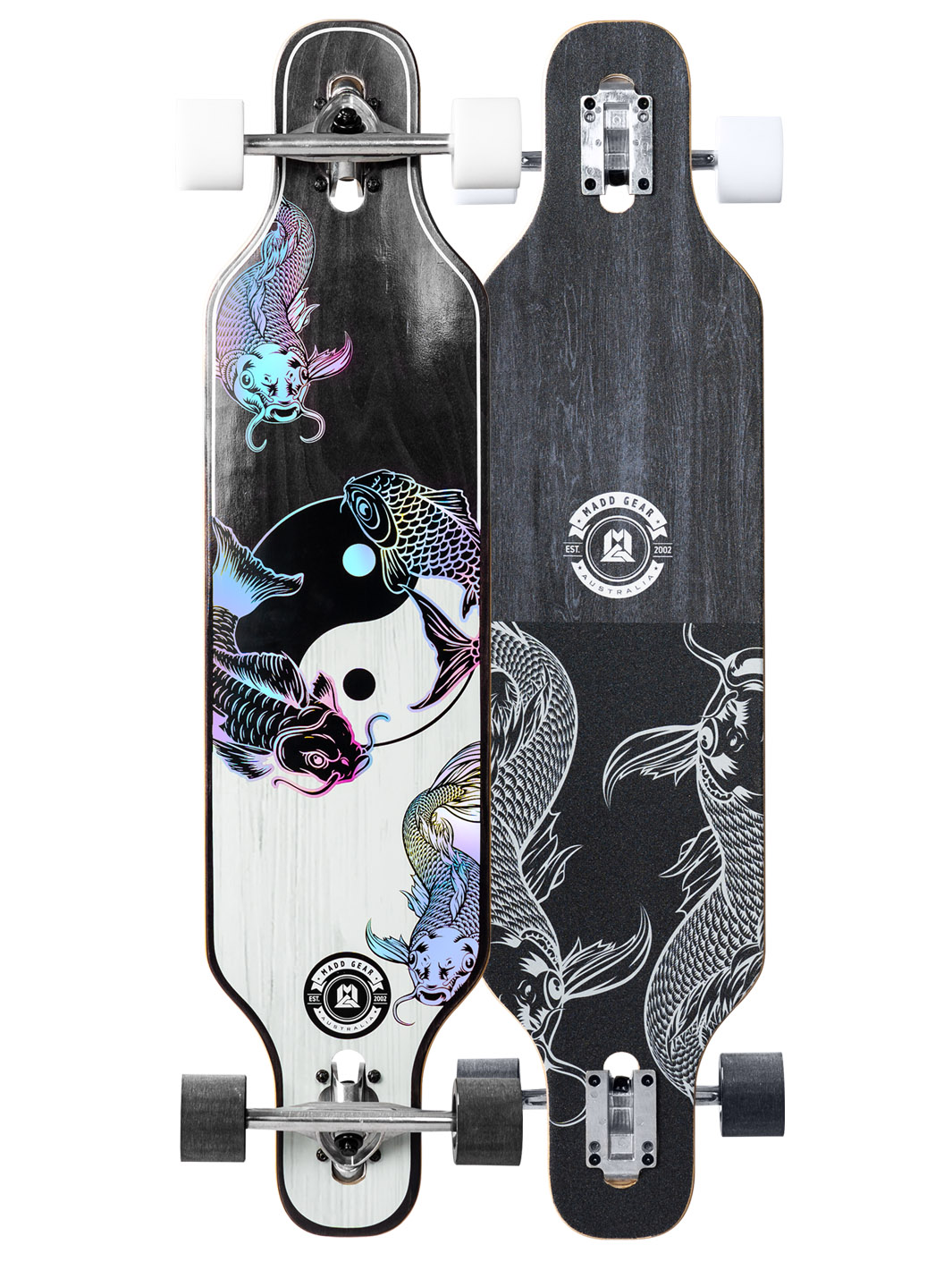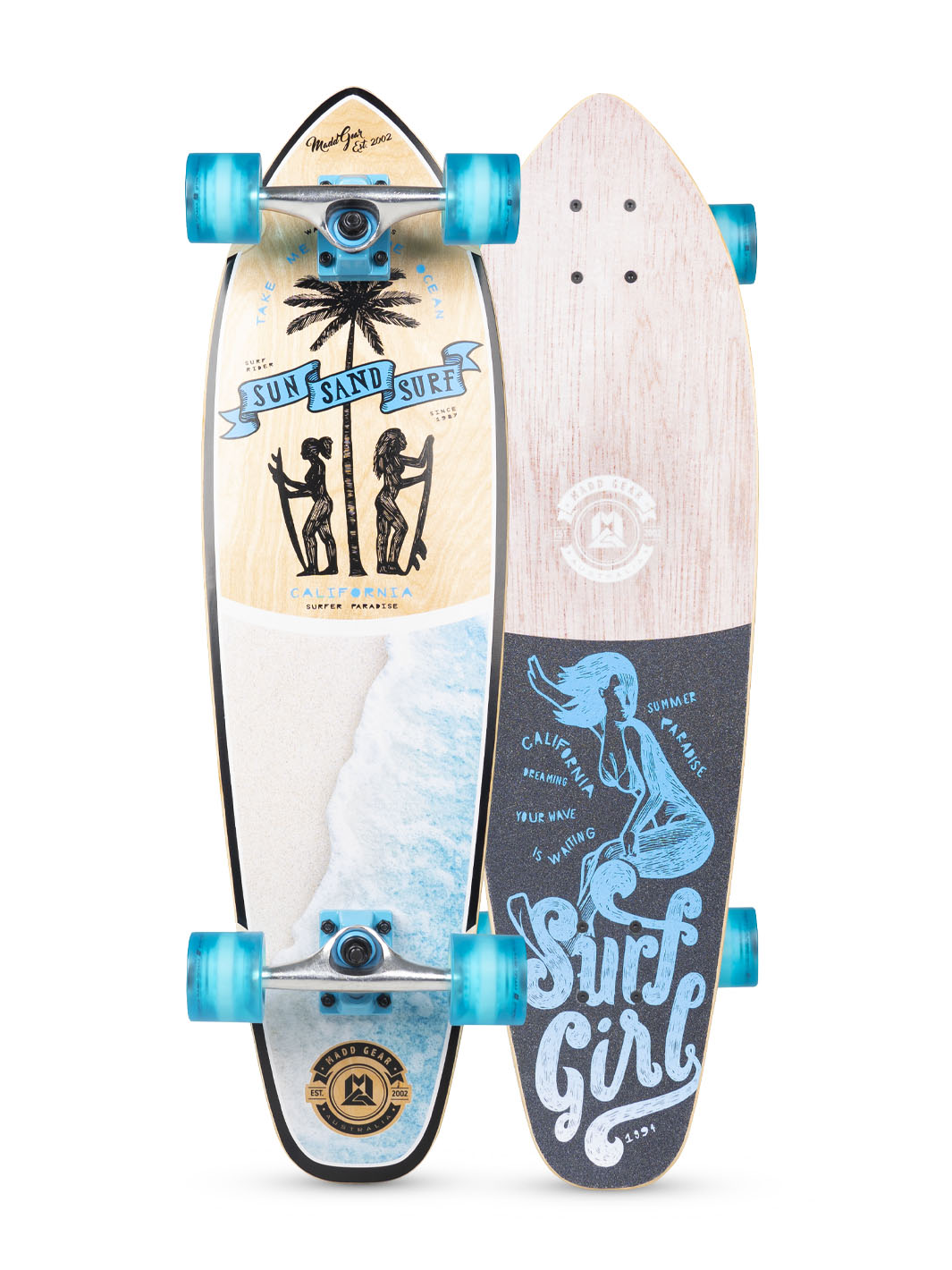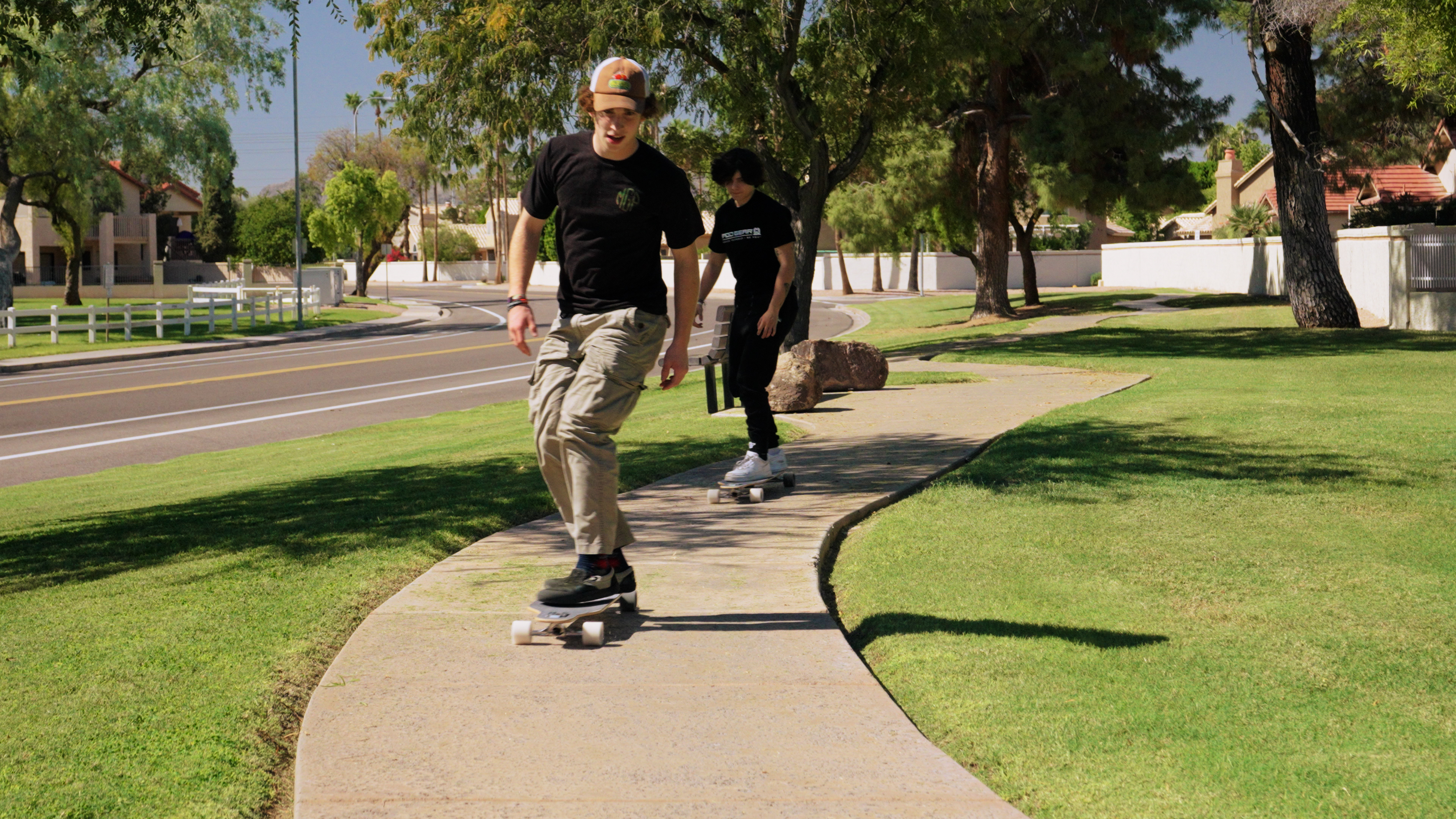Longboard vs Cruiser Skateboard: Key Differences Explained
Difference between longboard and cruiser skateboard is a topic that can leave many scratching their heads.
When it comes to choosing the right board, understanding these differences is crucial.
The choice between a longboard or a cruiser isn't just about aesthetics or style. It's about function, performance, and what you want from your ride.
This difference between longboard and cruiser skateboard boils down to deck size, design specifics like shape and truck mounts, as well as wheel types. Let's delve into this further!
Decoding the Differences: Longboards vs Cruiser Skateboards
The world of outdoor activities offers a plethora of options for kids and teenagers, including cruiser boards and longboards. These two types of skateboards may seem similar at first glance but have distinct differences. Read on for our guide to the difference between longboard and cruiser skateboard decks.
A typical longboard shines with its larger deck size, due to the boards unique characteristics. Lengths for a longboard typically ranges from 36" to 42". This longer deck, wider decks, combined with wider trucks, provides stability even at higher speeds, making it ideal for those who love going on long cruises. The bigger board suits well-rounded skaters looking for speed and distance in their rides.
In contrast, a cruiser board weighs less due to its smaller deck size, which typically measures no more than 34". Cruiser skateboard wheels are designed specifically with urban spaces in mind - a cruiser board suits short-to-medium distance transportation where nimbleness is key. A mini-cruiser or kicktail board can be your best bet if you need something portable yet fun.
Analyzing Deck Size: A Key Differentiator
When it comes to the world of skateboarding, deck size plays a pivotal role in distinguishing between cruiser boards and longboards. The wrong board can affect your ride's comfort and efficiency, so understanding this key difference between longboard and cruiser skateboards is important.
The Impact of Deck Size on Performance
But how does the difference in deck sizes impact performance? Let's explore that further.
The small deck size like what is found on a mini cruiser is agile due to its compact design - an attribute highly valued when navigating through crowded areas or performing tricks. However, stability at higher speeds may be compromised because of this feature.
Shapes Matter: Cruiser vs Longboard Designs
The shape of a board, whether it's a cruiser or longboard, plays an integral role in its functionality and the riding styles it best supports. Cruiser boards aren't just designed to resemble surfboards for aesthetic reasons; their squared tails and pointed noses have practical applications.
In contrast, longboard decks offer variety in design which caters to different rider preferences. A longer deck on pintail longboards is particularly beneficial during downhill rides or extended cruising trips due to increased stability at high speeds.
Differentiating Board Shapes For Riding Styles
A deeper understanding of how each type of board suits various riding styles can be gleaned from examining their unique characteristics further:
- Cruisers typically feature shorter and narrower decks, making them more agile around tight corners.
- Pintail shaped longboards shine during long cruising trips or downhill runs because they provide greater control even at higher speeds.
- Symmetrical cutout shapes found on some other types of longboards cater to well-rounded skaters who enjoy both freeriding and sliding maneuvers.
Trucks Talk: Understanding Mount Types
The mount type of your cruiser or longboard trucks is a critical factor that influences the board's performance. Generally, you'll find topmount trucks on cruisers, directly attached to the underside of their decks.
Traditional Kingpin vs Reverse Kingpin Trucks
Digging deeper into truck types reveals two main variants - Traditional Kingpin (TKP) and Reverse Kingpin (RKP). The former are typically found on mini-cruisers due to their compact size and responsive nature. These TKPs offer superior maneuverability in tight spaces, making them well-suited for urban riding styles.
In contrast, RKPs often feature on longboards as they provide stability during high-speed rides and smoother turns over longer distances. This characteristic makes them ideal for downhill racing or lengthy cruising trips where maintaining balance is paramount.
- Beyond just mounts:
Your choice isn't confined only to selecting the right mount; it extends beyond this fundamental decision when considering other factors such as wider deck sizes, the consequences of choosing the wrong board, the benefits of kicktail boards, among others. It's about finding what best suits each individual skater's needs depending on various aspects like preferred riding style or even how much a cruiser board weighs compared to its counterparts. Madd Gear skateboards are designed to have the ideal specification and sizing to meet most skaters needs.
Differences Extend Beyond Deck Size
In contrast, longboard wheels start at around 70mm and can go even larger in size. The hard compound used in longboard wheels gives them less grip but allows for higher speed capabilities during longer cruising trips. Softer compound cruiser skateboard wheels offer a smoother rider but will not last as long.
A Matter of Preference and Purpose
Your choice between cruisers and longboards will ultimately depend on your preferred riding style as well as your purpose - whether it's quick rides across town or smooth sailing down wide-open roads.
When making your selection, consider the unique features of each board to ensure you make the right decision for your specific needs - performance and safety depend on it. Keep in mind that choosing the wrong board can affect not only performance but also safety.
Skateboard vs Cruiser vs Longboard
In the expansive realm of skateboarding, there are numerous kinds of boards intended for particular styles of riding. Standard skateboards stand out as the go-to choice for performing tricks and stunts in parks or on streets due to their small deck size, which makes them lightweight and highly maneuverable.
Cruiser boards differ from standard skateboards in that they aren't meant for trick performance but rather short-to-medium distance travel. A cruiser board weighs more than a regular skateboard yet less than a longboard because it has wider trucks and a larger deck compared to a traditional skateboard. Cruiser boards also come in mini cruiser sizes for a compact ride.
A Longboard shines when used for long cruises thanks to their longer decks offering stability at high speeds. A longboard typically ranges from 38-42" and is ideal for long cruising trips. Selecting an unsuitable board can impede your child's learning progress; therefore, understanding how each type of board suits different needs is crucially important.
FAQs in Relation to Difference Between Longboard and Cruiser Skateboard
What is the difference between a cruiser board and a longboard?
Cruiser boards are compact, lightweight, and designed for short-to-medium distance travel. Longboards are larger with bigger decks, wider trucks, and wheels ideal for high-speed cruising or downhill riding. All of these factors play into a boards unique characteristics.
Is a cruiser easier than a longboard?
A cruiser's smaller size makes it more nimble and easy to carry around but may lack stability at higher speeds compared to longboards. A cruiser board suits medium distance travel.
Should I get a longboard or a cruiser for college?
If your campus has smooth paths and isn't too large, go for cruisers due to their portability. For longer commutes on varied terrains or if you enjoy speed rides, choose longboards as cruiser boards aren't ideal for higher speeds and longer distances.
What is a cruiser skateboard for?
Cruiser board decks are perfect for urban commuting over short distances thanks to their agility in navigating through crowded spaces while providing an enjoyable ride.

Conclusion
Longboards and cruiser skateboards, they're more than just a way to get around. They each possess their own distinct qualities that make up the difference between longboard and cruiser skateboard.
The deck size of cruisers is typically shorter, making them agile for city navigation. Longboards are larger, offering stability at higher speeds.
Shapes vary too - cruisers often mimic surfboard designs while longboards offer a variety like pintail or symmetrical cutouts.
The trucks on these boards differ as well; topmount for cruisers and either topmount or drop-through for longboards.
And let's not forget the wheels! Cruisers sport smaller ones that absorb shocks better than longboard wheels are larger promoting greater speed capabilities.
If you've been contemplating which one to choose between a longboard and cruiser skateboard, we hope this guide has helped clarify some key difference between longboard and cruiser skateboard.
Madd Gear offers an extensive range of both types tailored to suit your needs. Whether it's cruising through urban spaces or gliding smoothly over longer distances, our quality cruiser board decks ensure you enjoy every ride.












Leave a comment